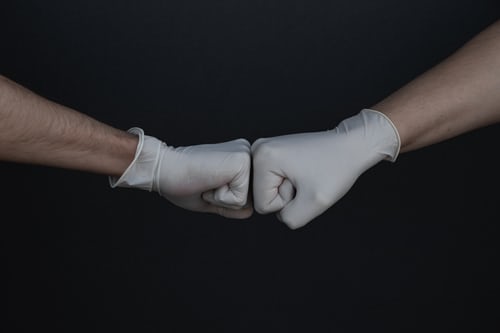How to find the right dental gloves?

Oral health professionals are constantly at risk of exposure to different diseases, and thus, having the right gloves at their disposal acts as a barrier to disease transmission. The safety measures put in place at dental facilities and hospitals encourage all medical staff to use disposable gloves at all times. That said, dental gloves are of few different types, so finding the right kind for your job may well be an essential part of risk reduction.
Different types of gloves suited for dental clinics
While there are different types of gloves available for medical usage, not all offer the same level of comfort, protection, or durability. In fact, the kind of gloves mostly used for medical purposes, include the following:
- Chloroprene gloves: These types of disposable gloves are made from a synthetic material known as Neoprene, and have a rubbery feel. These are mostly puncture-resistant and offer a fair bit of protection against hazards during treatment. That said, chloroprene gloves have a molecular structure like that of natural rubber latex, and hence, feel comfortable to use for a prolonged period of time, and are quite durable. The reason why it is preferred over latex gloves is because it does not contain the proteins that you typically find in latex gloves that cause allergic reactions. Thus, they are also a little expensive than the latex variety.
- Latex gloves: As you probably know already, latex gloves are made from a compound derived from mature rubber trees. Such gloves fit your hand perfectly and thus offer precise and high-tactile sensitivity. This is the reason that latex gloves are the go-to disposable option at many big and small medical establishments. That said, while latex gloves provide unmatched protection against bacteria and viruses, it fails to be of much help against chemicals. It is one of the cheapest varieties of dental gloves available and may trigger allergies in some people. This is why, many health professionals have been slowly migrating to chloroprene or nitrile gloves.
- Nitrile gloves: Often known as ‘medical-grade,’ nitrile gloves are made from synthetic rubber. These are the best alternative to latex gloves and have made a niche of their own, courtesy of their durability and long shelf life. It is chemical and puncture resistant, and also offers notable protection against bacteria and viruses. Moreover, unlike latex gloves, there are no allergies associated with using nitrile gloves.
While these are the three main types of medical gloves, there are a few other disposable glove options that offer some added protection. However, adding extra elements to gloves makes them pricier. These include:
- Powdered and powder-free gloves: While powdered gloves are easier to wear, they are also quite messy. On the other hand, the non-powdered variety reduces the chances of allergic reactions but is fairly difficult to put on.
- Chlorinated and non-chlorinated gloves: These are two more types of disposable gloves. As the name implies, in the chlorinated kind, chlorine is used instead of powder, resulting in a glove type that behaves much like powder-free gloves, but comes with the benefits of powdered gloves. However, they have a short shelf life and don’t last long if exposed to heat. On the other hand, the non-chlorinated gloves have a gel or silicone coating inside that makes them more susceptible to triggering allergies in people.
The best option for dental gloves
If truth be told, there’s no particular glove that can be labelled as the best option. While nitrile gloves do have an edge, they are priced higher than latex or chloroprene gloves, thus making them hard to be recommended. So, not all dental clinics would be able to afford the best disposable gloves for the staff. In short, go for the one that meets your need and budget, and always buy these from reliable suppliers or sellers, just so you do not have to worry about the quality of the products.